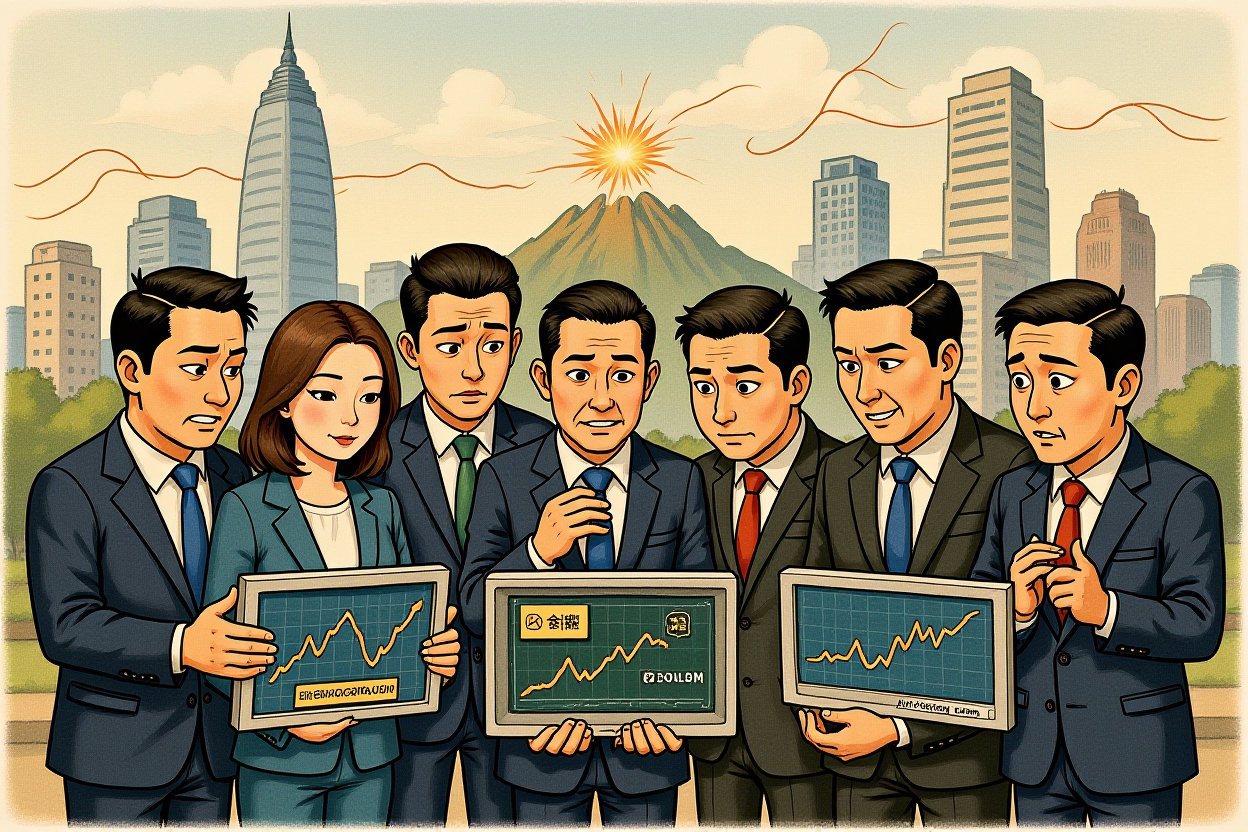Executive Summary
- Arc’teryx’s high-altitude fireworks display on Himalayan ridges triggers widespread environmental concerns and social media backlash
- The brand faces accusations of greenwashing despite claims of biodegradable materials and ecological protection measures
- Quality control issues and customer service complaints emerge alongside the environmental controversy
- Parent company Anta Sports’ luxury strategy comes under scrutiny as brand authenticity questions mount
- The incident highlights growing consumer awareness about corporate environmental responsibility in China
Brand Crisis Erupts in Thin Himalayan Air
Explosions echoed across 5,500-meter Himalayan ridges as Cai Guoqiang’s (蔡国强) ‘Rising Dragon’ pyrotechnic display unfolded, but the artistic spectacle quickly transformed into a public relations disaster for premium outdoor brand Arc’teryx. Within 48 hours, what the company billed as an artistic tribute to nature became China’s top trending topic on Weibo, sparking intense debate about corporate environmental responsibility and brand authenticity in sensitive ecosystems.
The Arc’teryx brand crisis demonstrates how quickly environmental missteps can escalate in China’s increasingly conscious consumer market. International investors monitoring Chinese consumer brands must recognize that sustainability claims now face unprecedented scrutiny from environmentally aware Chinese consumers.
Environmental Impact Assessment
Ecological Concerns in Fragile Himalayas
The Qinghai-Tibet Plateau, known as the ‘Third Pole’ of Earth, contains over 15% of global permafrost carbon reserves and hosts incredibly diverse ecosystems. The Himalayan range alone supports more than 3,500 species of higher plants, 800 bird species, and 200 mammalian species according to the Chinese Academy of Sciences. Any human intervention in this sensitive environment risks triggering irreversible chain reactions.
Arc’teryx customer service representatives claimed the event used scientifically assessed biodegradable colored powders and implemented comprehensive ecological protection measures. The company stated it relocated local livestock to safe areas before the display and planned to use salt bricks to guide pika and other small animals away from the site. Post-event, teams reportedly conducted clean-up operations and performed vegetation restoration on meadows and farmlands.
Public Skepticism and Scientific Questions
Despite these assurances, environmental experts and social media users expressed deep skepticism. How does one protect permafrost from pyrotechnic impacts? Where is the data supporting biodegradable material testing at high altitudes? These unanswered questions fueled the Arc’teryx brand crisis as the company quietly removed promotional content from social platforms, further eroding trust.
An ecological science blogger noted the project reflected both ignorance about plateau ecosystem complexity and arrogance in using nature for commercial promotion. Many outdoor enthusiasts expressed particular disappointment, noting that environmental protection represents core values rather than marketing slogans for genuine nature lovers.
Product Quality Concerns Surface
From Outdoor Gear to Luxury Status
The environmental controversy uncovered parallel concerns about product quality and customer service. Founded in Canada in 1989, Arc’teryx built its reputation on professional outdoor equipment until its 2019 acquisition by an Anta Sports (安踏体育)-led consortium. Anta Chairman Ding Shizhong (丁世忠) called the acquisition his most significant decision, subsequently pushing the brand toward luxury positioning through flagship stores, limited editions, and co-branding marketing.
This strategic shift placed Arc’teryx jackets in the数千至万元 (thousands to tens of thousands of yuan) price range, positioning them as luxury items rather than functional outdoor gear. The Arc’teryx brand crisis extends beyond environmental issues to questions about whether quality justifies these premium prices.
Mounting Customer Complaints
Consumer reports describe softshell jackets unraveling after limited use, garments pilling despite proper machine washing, and new products arriving with crooked stitching and rough finishes resembling counterfeits. While some customers reported satisfactory售后 (after-sales service) experiences, others described rejected claims and unsatisfactory resolutions.
The Arc’teryx brand crisis highlights the challenge luxury brands face when premium pricing creates elevated quality expectations. Consumers paying premium prices expect both brand prestige and reliable quality assurance—when either falters, brand reputation suffers accordingly.
Brand Authenticity Under Microscope
Values Versus Actions
The fundamental issue driving the Arc’teryx brand crisis involves the disconnect between brand messaging and actual practices. A company promoting ‘professional outdoor’ values and ‘reverence for nature’ faces accusations of ecological disrespect through high-altitude pyrotechnics. A luxury brand promising premium quality confronts customer complaints about basic manufacturing standards.
This values-action misalignment particularly resonates with China’s growing environmentally conscious consumer segment. The Ministry of Ecology and Environment’s increased focus on corporate environmental responsibility reflects broader societal expectations that brands practice what they preach.
Market Implications for International Investors
The Arc’teryx brand crisis offers important lessons for investors evaluating Chinese consumer brands. Environmental, social, and governance (ESG) factors increasingly influence brand perception and financial performance in China. Companies making sustainability claims must implement comprehensive environmental protection measures backed by verifiable data.
Luxury brand strategies must balance premium positioning with authentic quality delivery. The China Consumer Association’s growing attention to product quality issues means brands face increasing regulatory and reputational risks when quality fails to match marketing promises.
Broader Industry Implications
Luxury Outdoor Market Reassessment
The Arc’teryx brand crisis occurs amid China’s booming outdoor recreation market, projected to reach ¥1.5 trillion by 2025 according to China Outdoor Association data. This growth attracted numerous international brands, but the recent controversy suggests Chinese consumers increasingly prioritize authenticity and environmental responsibility alongside brand prestige.
Outdoor enthusiasts particularly value brands demonstrating genuine commitment to environmental protection rather than using nature as marketing backdrop. The Arc’teryx brand crisis may prompt industry-wide reconsideration of how brands engage with natural environments in their marketing activities.
Regulatory and Consumer Response
While no formal regulatory action has been announced, the intensity of public response suggests increased scrutiny of commercial activities in ecologically sensitive areas. China’s National Forestry and Grassland Administration previously strengthened regulations regarding commercial activities in protected areas, and this incident may prompt further regulatory tightening.
Social media backlash demonstrates consumers’ willingness to hold brands accountable for environmental impact. The swift deletion of promotional content suggests companies recognize this vulnerability, but such actions may further undermine trust when not accompanied by transparent communication.
Path Forward for Premium Brands
The Arc’teryx brand crisis illustrates evolving consumer expectations in China’s premium market. Brands must align environmental messaging with measurable actions, support sustainability claims with verifiable data, and ensure product quality matches premium positioning. The incident underscores that in today’s transparent digital environment, brand values must permeate all operations rather than merely serving as marketing language.
For international investors, this case highlights the importance of thorough ESG due diligence when evaluating Chinese consumer brands. Environmental responsibility and brand authenticity increasingly drive consumer loyalty and commercial success in China’s sophisticated market. Companies demonstrating genuine commitment to these values will likely outperform those relying primarily on brand heritage and marketing narratives.
The pyrotechnic display may have faded from Himalayan skies, but the questions it raised about commercial boundaries, ecological respect, and brand trust will continue resonating. Brands operating in China must recognize that environmental responsibility represents both ethical imperative and business necessity in today’s market.




